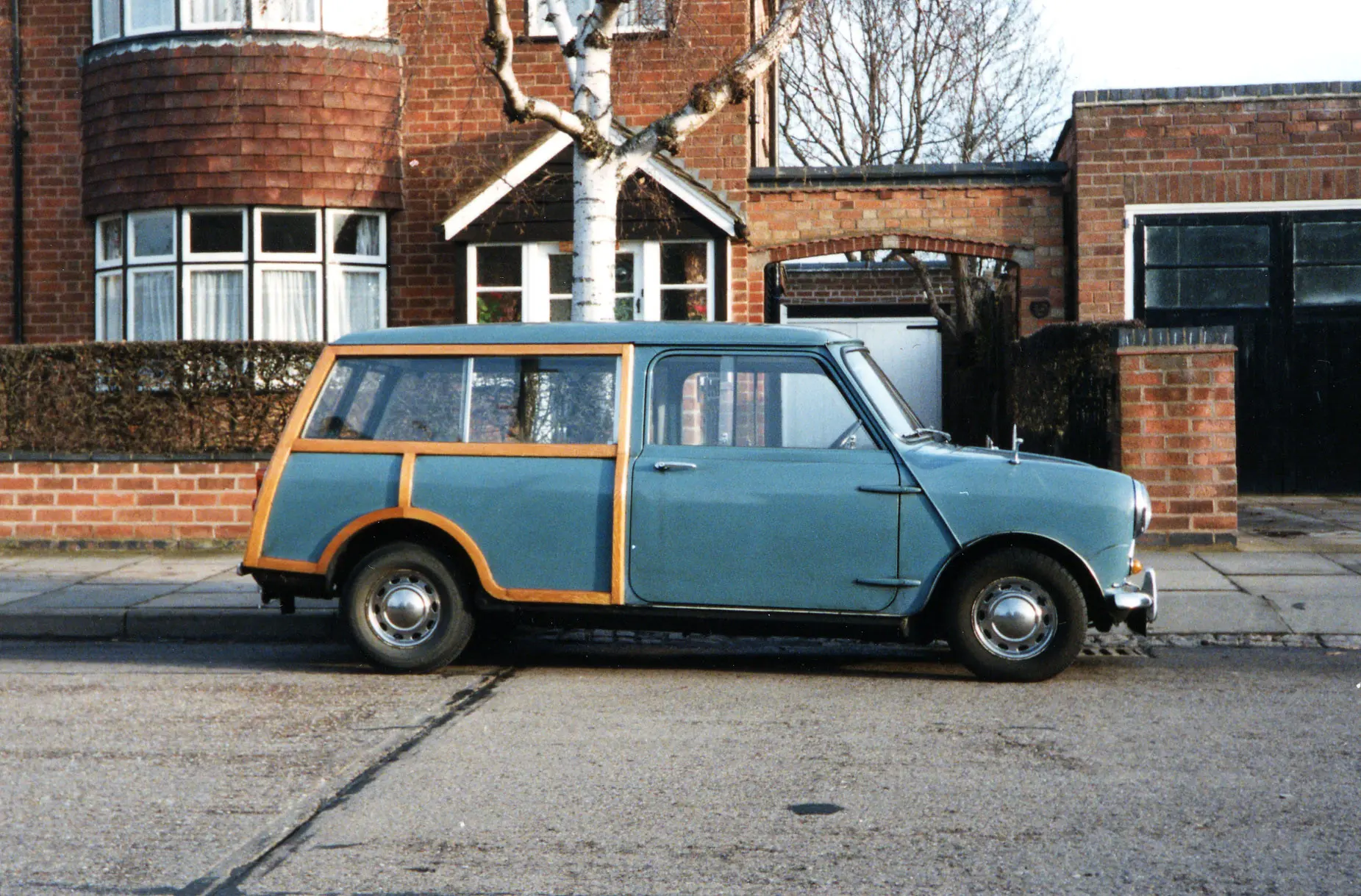THE ORIGINAL MINI ESTATE
14 March 2024
Early this month BMW announced the imminent demise of the MINI Clubman after seventeen years. But their heritage dates to a far earlier time. The original Morris Mini Traveler and Austin Seven Countryman first appeared in autumn 1960 - a world when such phrases as “National Service” and “You’re Never Alone With A Strand” were part of everyday vocabulary.
The British Motor Corporation (BMC) marketed the Mini estate as either a Countryman or a Traveller to satisfy their Austin and Morris dealerships respectively. Aside from badging and trim details the two were identical, costing £623 and boasting ‘De Luxe’ specification with a heater and windscreen washers as standard.

Photo credit Bonhams.com
On the practical side, the Countryman/Traveller could accommodate 35 cu ft. of luggage, while that purely decorative timber framing gave them a middle-class appeal. Alec Issigonis disdained such frivolity, but Queen magazine described them as perfect for fashionable “just marrieds”.
BMC offered an all-metal estate on the home market in 1962, the year the Austin versions dispensed with their Seven badges. However, an ambitious motorist would have considered the wood framed version worth the £91 premium. After all, social status could not be priced in mere £sd.
The Mk. II Countryman/Traveller debuted in October 1967 with enlarged grilles, improved braking, and a 998cc engine offering “a lot more punch under the bonnet”. According to the brochures their ashtrays were “so necessary for the pleasure and convenience of the modern family”, although keen drivers were more interested in the all-synchromesh gearbox introduced in August 1968.
On the 10th October 1969, the third generation of Mini Estates made their bow. The Telegraph reported: “From now on, all the cars will be known as just Minis, without the separate Austin and Morris labels. But both dealers will continue selling them”. The new ‘Clubman Estate’ shared the Roy Haynes-devised square nose, winding windows, and instruments of the Clubman saloon.
The recently formed British Leyland promised the Clubman Estate was “fully equipped to De Luxe specification”, with fresh air vents and a “fully carpeted load carrying space” as standard. In place of the Countryman/Traveller Mk. II’s timber framing, the Clubman station wagon also featured a Di-Noc plastic ‘wood’ strip.
By 1976 the Estate featured stick-on stripes instead of Di-Noc trim. 1980 saw the demise of the Clubman saloon with the launch of the Austin Metro’s debut, but sales of the Estate, latterly known as ‘1000 HL’, continued until 1982. The tinted glass, reclining front seats and “cropped nylon seat wearing surfaces” would have appeared unimaginable luxuries to the owners of a 1960-vintage Countryman/Traveller.
25 years later BMW unveiled the MINI Clubman, and the early examples are on the verge of becoming collectable. Meanwhile, this writer still craves a Countryman or Traveller because, as I wrote for a Mini title, they encapsulate an early 1960s not of The Shadows or Helen Shapiro but one of thatched cottages, Margaret Rutherford in Murder She Said and the BBC Home Service. “A picnic hamper containing potted meat sandwiches, Mr. Kipling’s cakes and lashings of ginger beer would have been de rigueur on a car designed to appeal to the ‘County Set’”.
Not to mention that Enid Blyton appeared to have influenced the brochure copywriter:
Round to the front now – everybody in. Plenty of space for Dad’s long legs. Mother’s skirt won’t get crushed or crumpled in this roomy Traveller. And the children – not to mention the puppy – have got real space to spread themselves”.
